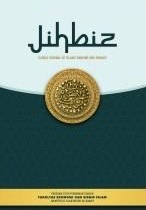Optimizing Performance: A Dynamic Analysis of Credit Quality, Operational Efficiency, and Their Influence on ROA in Indonesian Islamic Banks
DOI:
https://doi.org/10.22373/cz9qkp11Keywords:
Islamic Banking, Performance, Credit Quality, Operational Efficiency, and Return on AssetsAbstract
ABSTRACT This study investigates the influence of key financial management strategies on the Return on Assets (ROA) of Islamic Commercial Banks (ICBs) in Indonesia. The analysis explores the direct and indirect effects of Funding Deposit Ratio (FDR) and Non-Performing Financing (NPF) on ROA, with Operational Costs to Operational Income (BOPO) as a mediating variable. The findings reveal a significant influence of FDR on ICB performance. While a higher FDR leads to lower operational costs, it might also be associated with lower profitability due to deposit interest rates. ICBs need to strike a balance between cost-effective deposits and exploring alternative funding sources. While the direct effect of NPF on ROA is unclear, it significantly impacts profitability indirectly through its influence on operational efficiency. Higher NPF levels can lead to increased costs, potentially reducing ROA. Therefore, effective NPF management is crucial for ICBs. The study further emphasizes the importance of managing operational efficiency (BOPO). Lower BOPO, indicating efficient use of operational income, is directly linked to a higher ROA. ICBs should focus on cost-saving measures and optimizing operational processes to improve efficiency and maximize ROA. Overall, the research highlights the critical role of a holistic approach to financial management in ICBs. By effectively managing FDR, NPF, and BOPO, ICBs can achieve a well-balanced funding structure, minimize bad debt risk, and optimize operational efficiency. Keywords: Islamic Banking, Performance, Credit Quality, Operational Efficiency, and Return on Assets.Downloads
References
Abdul, Dewi, Siti, W. (2022). Tantangan Perkembangan Perbankan Syariah Di Indonesia. Jurnal Tabarru’: Islamic Banking and Finance, 5(2).
Agung, I. G. N. (2010). Time Series Data Analysis Using EViews. In Time Series Data Analysis Using EViews. https://doi.org/10.1002/9780470823699
Al-Hakim, S. (2013). Perkembangan regulasi perbankan syariah di Indonesia. Ijtihad : Jurnal Wacana Hukum Islam Dan Kemanusiaan, 13(1). https://doi.org/10.18326/ijtihad.v13i1.15-31
Anderson, B. (2005). The value of mixed-method longitudinal panel studies in ict research. Information, Communication & Society, 8(3). https://doi.org/10.1080/13691180500259160
Aprianti, E., & Wahyuningsih, D. (2022). IMPLICATIONS OF RETURN ON ASSET (ROA), EARNING PER SHARE (EPS), PRICE EARNING RATIO (PER), AND DEBT TO EQUITY RATIO (DER) TO STOCK PRICE. AKSELERASI: Jurnal Ilmiah Nasional, 4(1). https://doi.org/10.54783/jin.v4i1.535
Arar, K., Yilmaz, M., & Koschoreck, J. W. (2024). Mapping doctoral dissertations in an educational leadership programme : A longitudinal examination of knowledge construction in the last two decades. November 2023, 1–25. https://doi.org/10.1002/rev3.3446
Bahril, M. ’Adilah, & Maulayati, R. R. (2020). Financial Ratio to Financing in Indonesia Islamic Rural Bank Analysis. Journal of Islamic Economics Lariba, 6(1). https://doi.org/10.20885/jielariba.vol6.iss1.art3
Creswell, J. W., & Creswell, J. D. (2018). Research Design: Qualitative, Quantitative, Mixed Method Approaches 5th Ed. In Research Defign: Qualitative, Quantitative, and Mixed M ethods Approaches.
Febrianthi, P. A. (2012). PENGARUH CAR, BOPO, NPF, DAN FDR TERHADAP ROA BANK UMUM SYARIAH DI INDONESIA. Fakultas Ekonomika Dan Bisnis.
Fitri Fadilah Widyaputri, & Edy Yusuf Agung Gunanto. (2023). Shariah Mobile Banking Adoption Trends: Analysis Mob Mentality, Reputation, Perceived Risk, and Islamic Financial Literacy. Jurnal Ekonomi Syariah Teori Dan Terapan, 10(5). https://doi.org/10.20473/vol10iss20235pp482-495
Humbatova, S. İ. Q., Garayev, A. I. O., Tanriverdiev, S. M. O., & Hajiyev, N. Q. O. (2019). Analysis of the oil, price and currency factor of economic growth in Azerbaijan. Entrepreneurship and Sustainability Issues, 6(3). https://doi.org/10.9770/jesi.2019.6.3(20)
Kismawadi, E. R. (2017). OTORITAS JASA KEUANGAN (FINANCIAL SERVICES AUTHORITY) DAN INDUSTRI PERBANKAN SYARIAH DI INDONESIA. JURNAL EKONOMI DAN BISNIS ISLAM, 1(2). https://doi.org/10.32505/jebis.v1i2.24
Kismawadi, E. R. (2023). Improving Islamic bank performance through agency cost and dual board governance. Journal of Islamic Accounting and Business Research. https://doi.org/10.1108/JIABR-01-2023-0035
Kismawadi, E. R. (2024). Contribution of Islamic banks and macroeconomic variables to economic growth in developing countries: vector error correction model approach (VECM). Journal of Islamic Accounting and Business Research, 15(2). https://doi.org/10.1108/JIABR-03-2022-0090
Kismawadi, E. R., Hamid, A., Rasydah, R., & Rafida, A. (2021). What Determines the Financial Performance of Islamic Banks in Indonesia? Share: Jurnal Ekonomi Dan Keuangan Islam, 10(2). https://doi.org/10.22373/share.v10i2.9164
Nura, I., Nurlaila, & Marliyah. (2023a). Analisis Pengaruh ROA, BOPO, FDR, CAR, dan NPF terhadap bagi hasil Mudharabah pada Bank Umum Syariah Indonesia 2012-2018. Owner: Riset & Jurnal Akuntansi, 7 Nomor 1,.
Nura, I., Nurlaila, N., & Marliyah, M. (2023b). Pengaruh CAR, BOPO, FDR Dan NPF Terhadap Tingkat Bagi Hasil Mudharabah Dimediasi ROA Di Bank Umum Syariah Indonesia. Owner, 7(1). https://doi.org/10.33395/owner.v7i1.1503
Satibi, E., Utami, W., & Nugroho, L. (2018). A Comparison Of Sharia Banks And Conventional Bank In Indonesia For The Period 2008-2016. Internal Journal of Commerce and Finance, 4(1).
Setyawati, I., Suroso, S., Rambe, D., & Susanti, Y. (2017). Peningkatan Kinerja Keuangan Melalui Manajemen Kesehatan Pada Bank Syariah Di Indonesia. Ecodemica, 1(2).
Shandy Utama, A. (2020). PERKEMBANGAN PERBANKAN SYARIAH DI INDONESIA. UNES Law Review, 2(3). https://doi.org/10.31933/unesrev.v2i3.121
Weyant, E. (2022). Research Design: Qualitative, Quantitative, and Mixed Methods Approaches, 5th Edition. Journal of Electronic Resources in Medical Libraries, 19(1–2). https://doi.org/10.1080/15424065.2022.2046231
Zaimović, A., Arnaut-Berilo, A., & Osmanbegović, A. (2020). Efficient Diversification with Shariah-Compliant Stocks: Evidence from the South-East European Capital Markets. In Islamic Finance Practices. https://doi.org/10.1007/978-3-030-34420-7_5
Zikri, Z., Ridho Kismawadi, E., & Hisan, K. (2021). Faktor-Faktor yang Mempengaruhi Net Operating Margin Pada BRI Syariah Periode Maret 2011-Maret 2019. JIM: Jurnal Ilmiah Mahasiswa, 3(1). https://doi.org/10.32505/jim.v3i1.3289
Downloads
Published
Issue
Section
License
Copyright (c) 2025 Munadiati Munadiati, Alfian Alfian, M. Yahya Yahya, Putri Wulandari

This work is licensed under a Creative Commons Attribution-ShareAlike 4.0 International License.
Jihbiz : Global Journal of Islamic Banking and Finance Education uses license CC-BY-SA or an equivalent license as the optimal license for the publication, distribution, use, and reuse of scholarly works. This license permits anyone to compose, repair, and make derivative creation even for commercial purposes, as long as appropriate credit and proper acknowledgement to the original publication from Jihbiz : Global Journal of Islamic Banking and Finance is made to allow users to trace back to the original manuscript and author. Readers are also granted full access to read and download the published manuscripts, reprint and distribute the manuscript in any medium or format.








